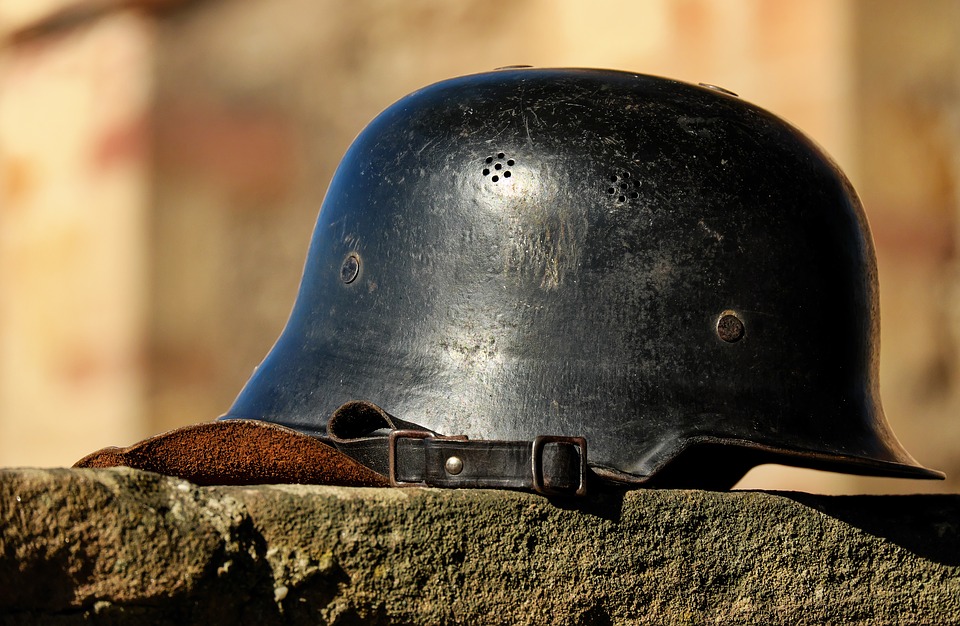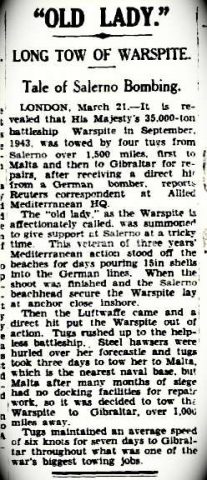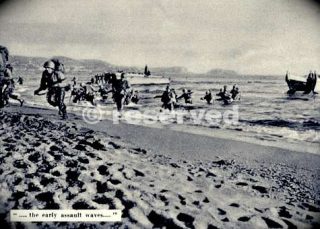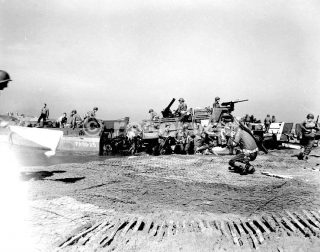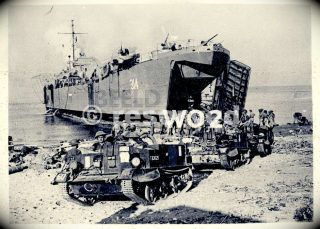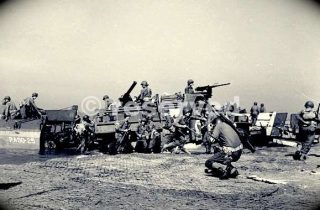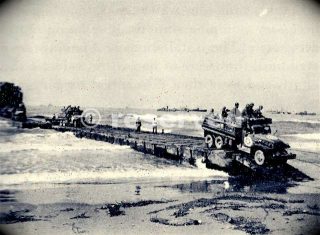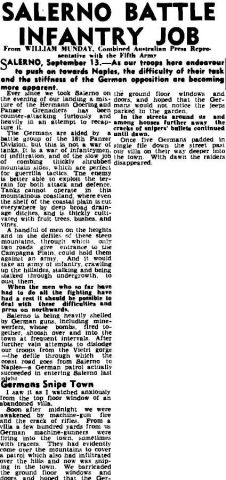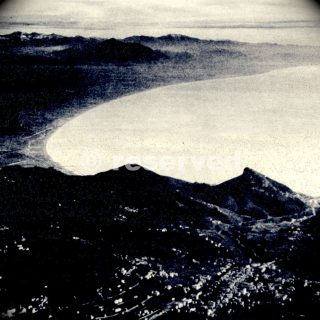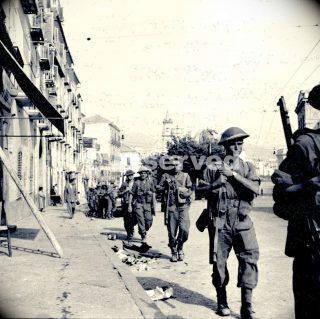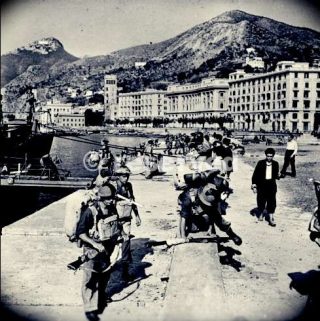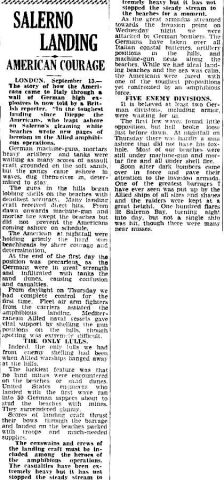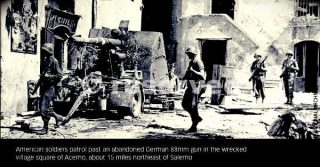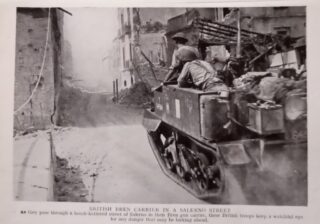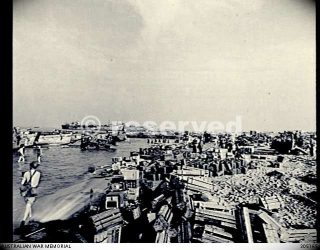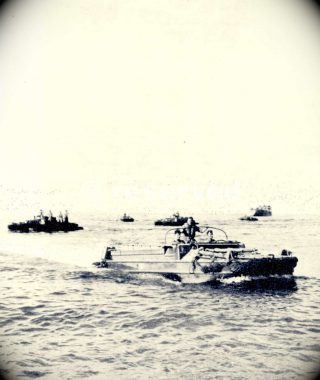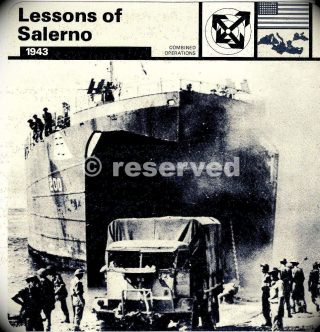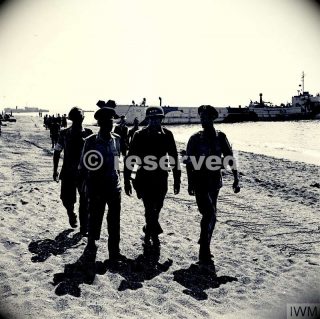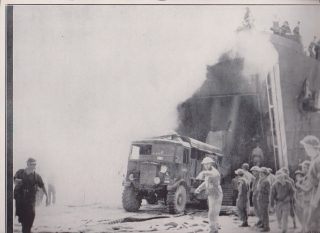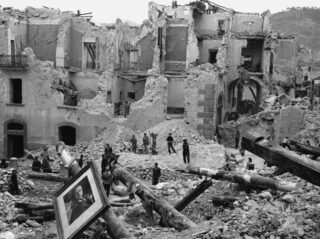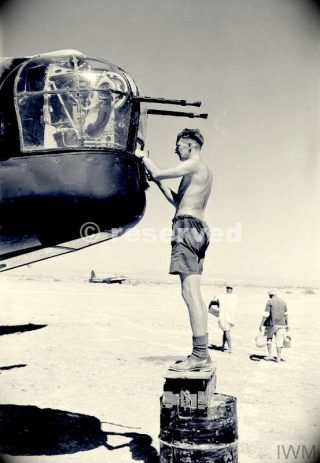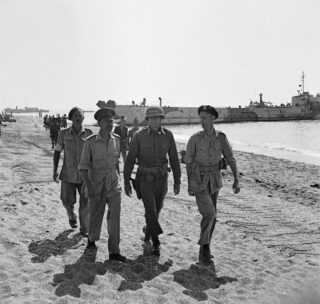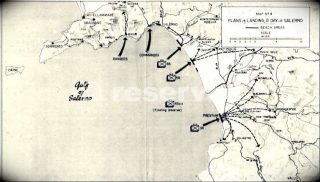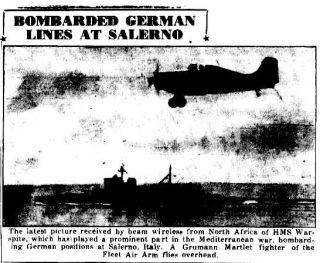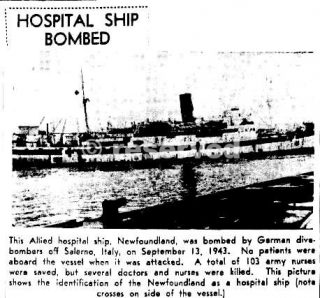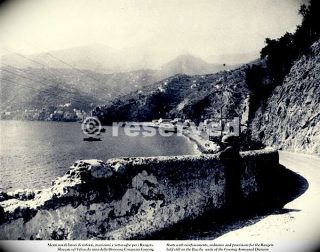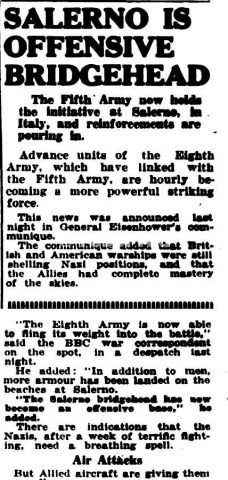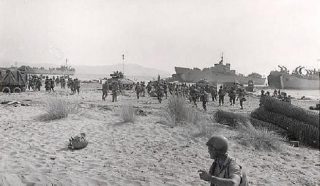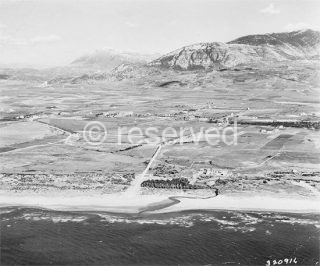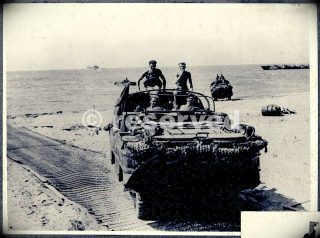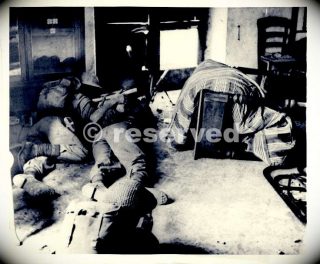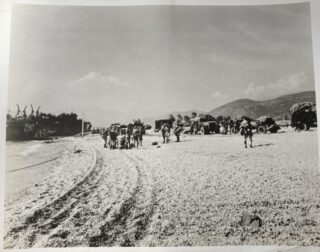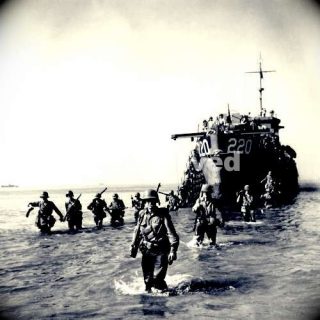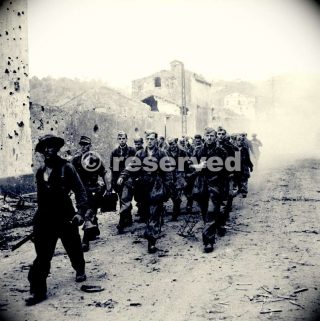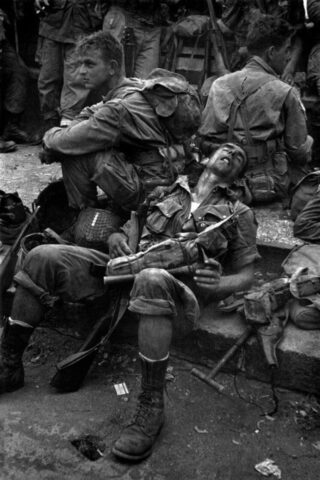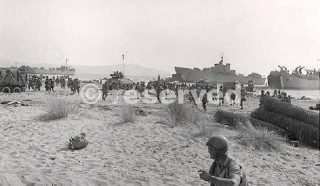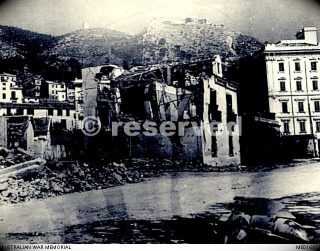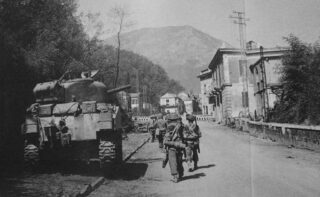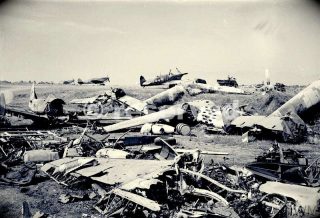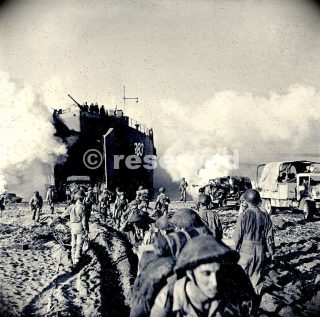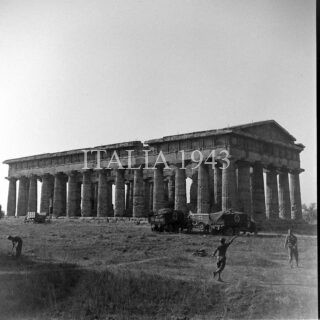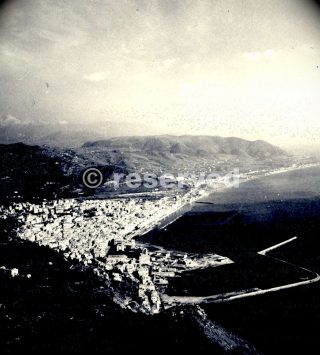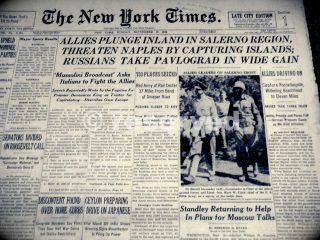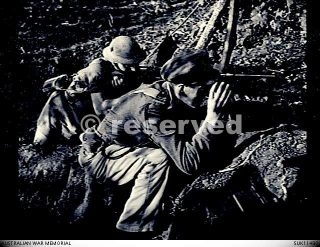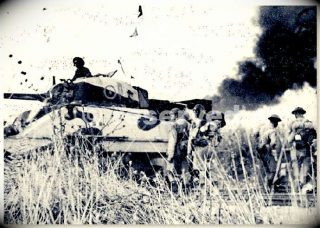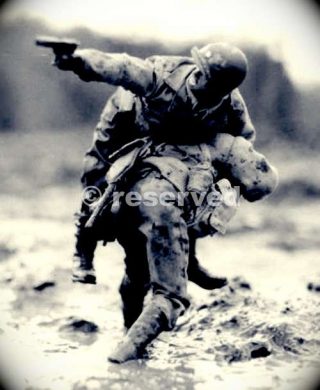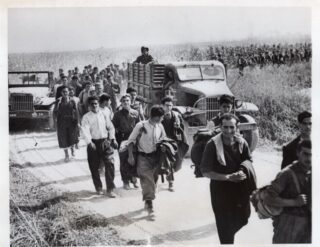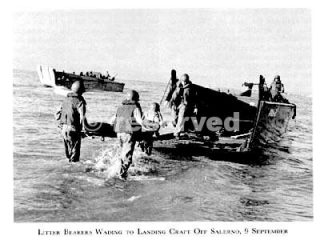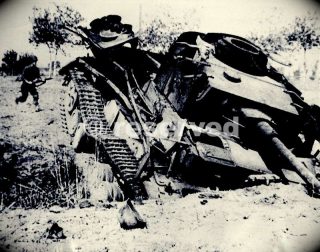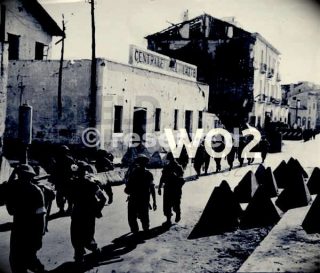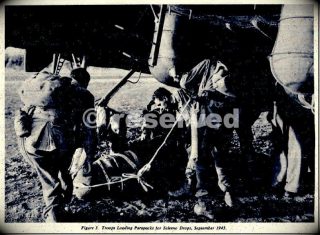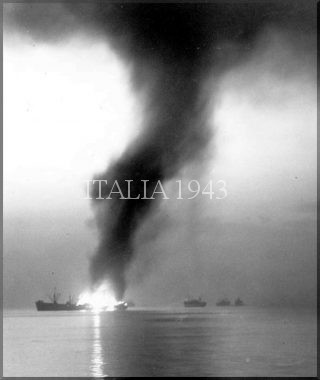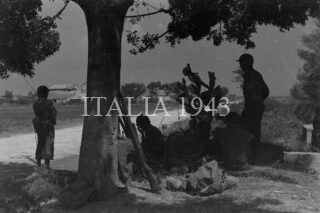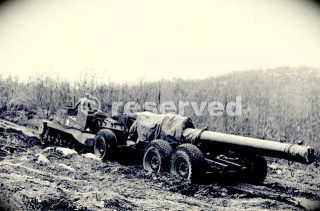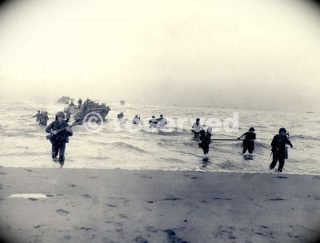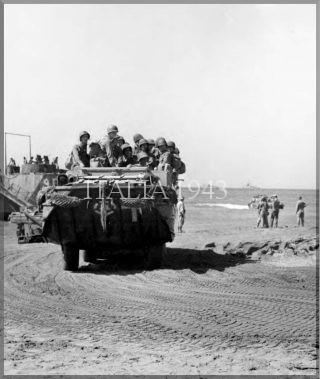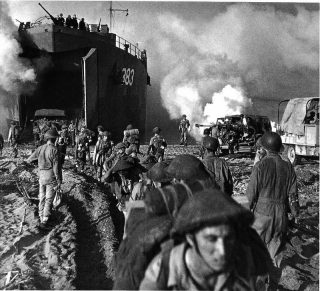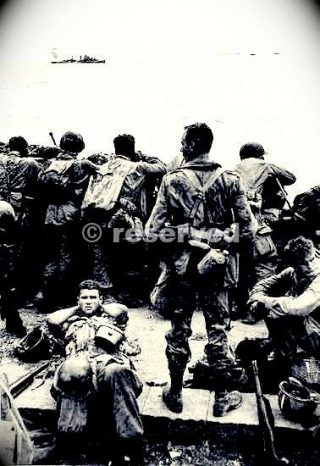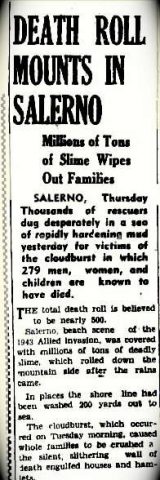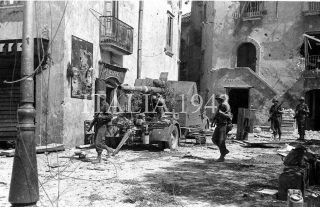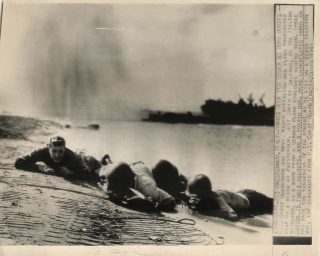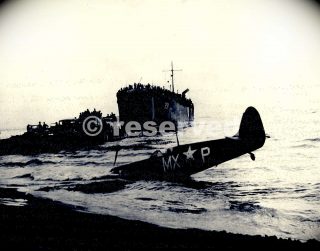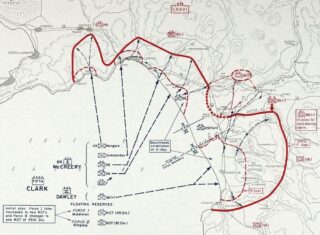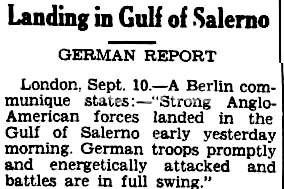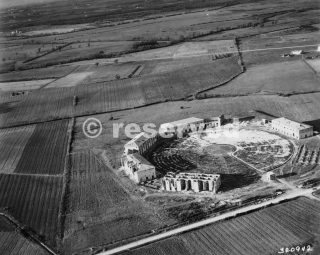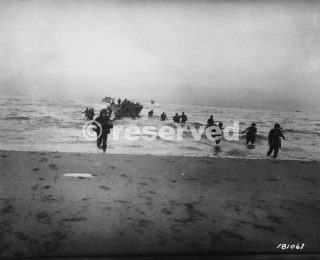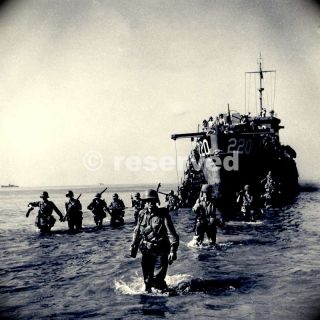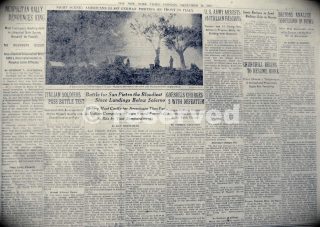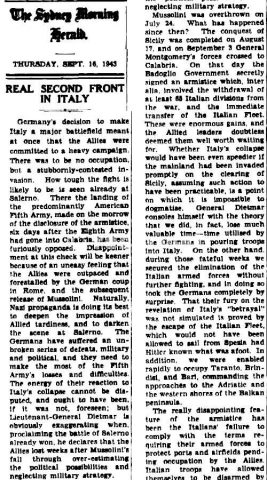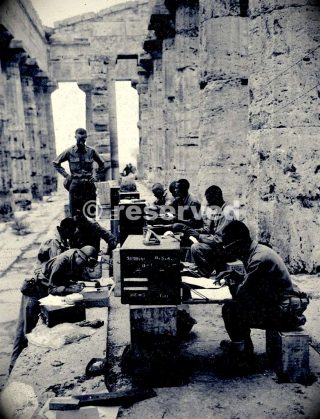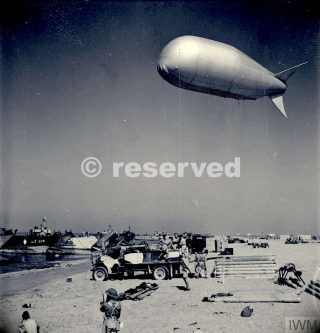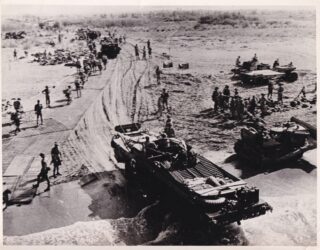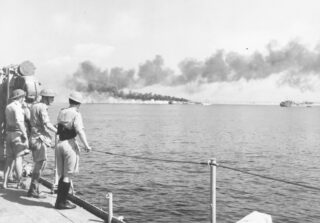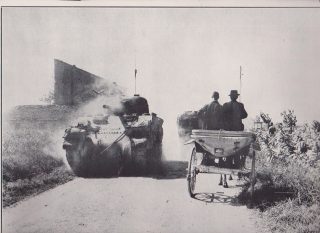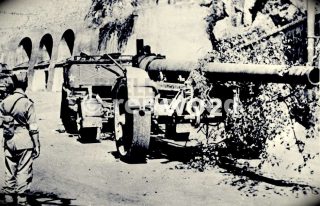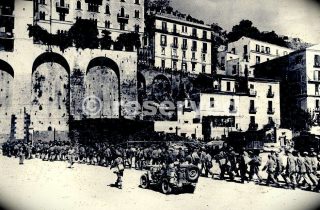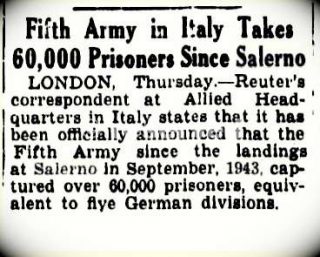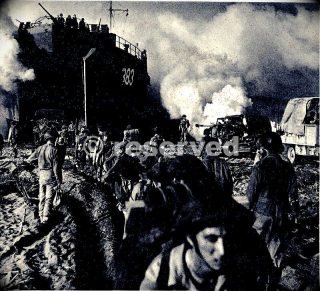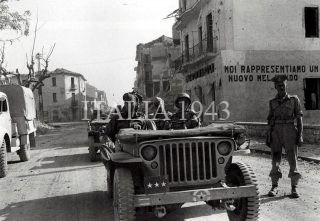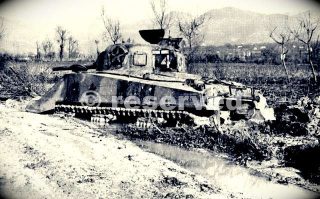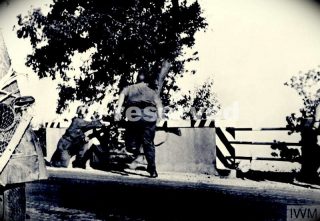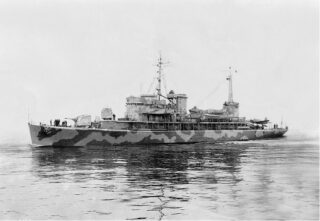SALERNO BATTLE 1943
SALERNO BATTLE 1943
Historians like to think of war as a contest of generalship. They paint a picture of two master strategists hunched over their respective maps, dueling mano a mano, with victory going to the leader who outthinks and outwits his counterpart, and defeat the result of blunders on the part of the loser. Often, however, this emphasis on supreme command obscures more complex realities, more subtle factors that separate the winners from the losers. War is a strange endeavor, one in which “everything is very simple, but even the simplest thing is difficult,” as the great Prussian philosopher Karl von Clausewitz once wrote. While genius (or lack of it) plays a role, so do systemic factors: terrain, weather, politics, time, space, and chance. Such complexities tend to make everyone look pretty bad at times and, whatever historians may say, no one ever really becomes an expert at waging war.
A prime example of war’s tendency to confound the fighters is the Allied invasion of Italy in 1943. On September 9, the U.S. Fifth Army, under the command of Lieutenant General Mark W. Clark, landed near Salerno, some 150 miles up the western coast of Italy and 40 miles south of Naples, with the goal of knocking Italy out of the war and shattering the Axis coalition. Operation Avalanche seemingly had it all: initiative, supremacy at sea, dominance in the air, and a clear advantage in numbers. Despite all these pluses, it almost careened into disaster. Just a few days into the operation, Clark—an experienced planner and staff officer now holding his first field command—was giving serious consideration to evacuating his beachhead and leaving sunny Italy altogether. While the line held—barely—Avalanche had failed. Rather than achieving a lightning-quick seizure of Italy, the Allies were now committed to one of the most dubious operations in all of military history: fighting up the narrow boot of the Italian Peninsula from the toe to the top.
Nor did the Germans fare any better. They began the campaign in scramble mode. Their main ally, Italy, had just surrendered to the Allies; the Italian army (all three million men of it) had to be disarmed and cleared away. Meanwhile, Allied armies were landing all over the place—Clark at Salerno, the British Eighth Army pushing up from Reggio di Calabria at the toe in Operation Baytown, and another British force landing at Taranto in the Apulian heel—the lamentably named Operation Slapstick. Miraculously weathering these various storms, the Germans came within an inch of throwing Clark and his boys back into the sea. In the end, however, the Germans, too, were unable to seal the deal and found themselves dragged into a defensive war of attrition in Italy—the last thing an outnumbered Wehrmacht needed by this point in the war.
Rather than presenting the cut and thrust of a good chess match between the commanders, Avalanche poses a mundane question: in war, is it possible for both sides to lose?
The invasion of Italy offered challenges to both sides. The Allies, with their naval supremacy, could land anywhere they wished. But no matter where they landed, they faced some tough geography—shallow beaches overlooked by tall mountains—in a theater without much room for maneuver. At Salerno, General Clark had two corps in the initial landing: British X Corps on his left, led by Lieutenant General Richard L. McCreery, and U.S. VI Corps on his right, under Major General Ernest J. Dawley, containing a single infantry division in the initial landing—the 36th “Texas” Division, formed from units of the Texas National Guard—with the 45th Infantry Division in the floating reserve.
A balanced line, two corps abreast, two divisions each; it seemed simple enough. Nevertheless, the landings nearly capsized altogether, the result of a problem that everyone in the Allied camp recognized but could find no way to solve: The plain at Salerno was bisected by two rivers, the Sele and its principal tributary, the Calore. While neither the Sele nor the Calore was anyone’s idea of a great river, their banks were steep, and the breadth required for deploying the two corps on either side of them created a 10-mile operational gap that separated the two assault corps. If the Germans recognized this gap and exploited it, they could slice the Allied beachhead into two segments and destroy it. Closing the “Sele gap” before the enemy took advantage of it had to be a priority.
Indeed no trained officer on either side needed more than a glance at the map to spot the problem areas. Clark recognized them, and so did his staff. So did Lieutenant General George S. Patton Jr., currently in his “Sicilian exile” after the infamous slapping incidents. As reserve commander if Clark was incapacitated, Patton was briefed on the operation on September 2. “As sure as God lives,” Patton wrote in his diary that night, “the Germans will attack down that river.”
The existence of a gap that divided the invasion force, therefore, was not a blunder by Allied planners, something that smarter minds might have avoided. Rather, it emerged from systemic factors. A challenge to the reader: Put yourself into the shoes of the Allied planners. You have committed to a major landing in Italy, one that requires strong air support from land-based aircraft in Sicily and that needs to seize a major port south of Rome as its supply base. Add that up, and what do you get? You get a landing around Naples. Now, find a nearby beach broad enough to land two army corps abreast. What do you get? You get a landing between Salerno and Paestum. You get a beach with a meandering river right down the middle of it. You get Avalanche.
This same sense of inevitability characterized the landings themselves. The Italian surrender, announced on September 8, raised hopes for a landing against light opposition, perhaps even an unopposed one. The word in Allied intelligence circles was that the Germans weren’t interested in defending Italy this far to the south. Given the chaos up and down the peninsula caused by the Italian defection, they probably wouldn’t try to make a stand anywhere south of Rome. The intelligence was imperfect, however, and rather than being welcomed by the natives, the assault troops of Fifth Army ran into heavy German fire even as they approached the beach. Losses were heavy, and the loss of cohesion was total.
The tendency has been to blame Clark for all this, especially for the decision he and his staff made to go in without a preliminary bombardment. However, this tactic did not originate with Clark. By mid-1943, Anglo-American planning circles were giving a great deal of thought to the problems of large-scale amphibious warfare. They had already staged two opposed landings, in North Africa and Sicily, and knew that the big one, the cross-Channel invasion, was going to take place in 1944. A number of ideas were floating in the air about how best to achieve surprise, which was considered essential to success. A rapid strike without much in the way of preliminary shellfire was one of those ideas.
The real problem at Salerno was not the lack of Allied bombardment. It was the Germans. There were only three Allied divisions in the first wave—the British 46th and 56th, and the U.S. 36th. They hit a beach defended by a full-strength panzer division—the 16th, under the command of General Rudolf Sieckenius. Faced with the task of guarding a full 25 miles of beach, Sieckenius dug eight strongpoints along his front between Salerno and Agropoli to the south, and formed four mobile battle groups, each consisting of a battalion of infantry supported by tanks and artillery. Finally, he emplaced his artillery on the high ground, where it could look down on any force hitting the beach.
While the 16th was overstretched at Salerno, it was nonetheless an aggressive, battle-tested panzer division under a wily veteran commander. It gave a predictably good accounting of itself on that first day, laying down fire and launching small counterattacks by groups of five to seven tanks, which unhinged the Allied landing schedule and limited the depth of the initial beachhead.
There was only so much the Germans could do, however. Nothing in their previous experience had prepared the panzers for the incredible level of firepower the Western Allies generated. Naval guns, used previously to support the Sicily landings, played a crucial role as the cruisers Philadelphia and Savannah blasted the unlucky defenders with direct fire from their 6-inch guns. At the same time, waves of Allied aircraft from Sicily and from five British aircraft carriers prowled the skies over the beachhead relentlessly. The badly outnumbered Luftwaffe put in an occasional appearance over the battlefield during the first day, but German soldiers on the ground could be forgiven for not noticing. Many historians have criticized the defenders for not using their armor in mass against the landings, but it wasn’t really a choice; the only way the panzers could survive that incessant wave of Allied fire was to disperse. By nightfall, Sieckenius had only 35 operational tanks, and decided to order his division into a defensive position well inland, where he could monitor the Allied build-up but stay out of range of their guns.
While Fifth Army had made it ashore, its problems were just beginning. The next two days, September 10–11, saw both sides consolidating and reinforcing. The Allies landed portions of the 45th Division out of the floating reserve, along with small elements of British 7th Armoured Division. But the effort paled in comparison to the Germans, who had battle-worthy divisions all over southern Italy. Elements of two more German divisions, the 15th Panzergrenadier Division and the 1st Parachute Panzer Division “Hermann Göring,” were soon rushing to join the 16th Panzer. Together, the three divisions made up the XIV Panzer Corps. A second corps was also rushing to join the fray—the LXXVI Panzer Corps with two more divisions, the 26th Panzer and the 29th Panzergrenadier. All these forces were combined into the German Tenth Army under General Heinrich von Vietinghoff, a veteran of commands in Poland, Yugoslavia, and France. Finally, once the Germans had sorted out the touchy situation at Rome, where they had some nervous moments trying to disarm many times their own number of Italian formations, the 3rd Panzergrenadier Division became available and it, too, was barreling down the road to Salerno.
It all added up to some bad math for the Allies: three Allied divisions against six German. While all six were under strength (the 15th Panzergrenadier had only seven tanks and the 26th Panzer Division had none at all), they were all tough, with hard-charging commanders who were veterans of the murderous fighting on the Eastern Front in 1942.
This was the crisis point for the Allies, but especially for the Americans. They had an infantry division and a half, perched unsteadily on a flat plain with their backs to the sea in a frail and bifurcated beachhead. In front of them was a situation that would make any competent German general salivate: a solid line of two panzer corps abreast, arrayed in classic konzentrisch (“concentric”) fashion around the beachhead, with two ruthless commanders just waiting for the signal to go.
The Germans spent September 12 sending out reconnaissance patrols to probe the Sele gap. Vietinghoff was dumbfounded. It was simply inconceivable to him that the Allies had “split themselves into two sections.” The next day, September 13, he lowered the boom. Three divisions—16th Panzer, 29th Panzergrenadier, and 26th Panzer—launched a full-blown assault on the Salerno beachhead. The focus of the fighting was a group of five brick buildings, known as the tobacco factory, alongside the Sele River. The American defenders were badly strung out, with the 36th Division holding no less than 35 miles of front and with the 45th Division, still not completely landed, attempting a tricky sidestep to the left to make contact with the British X Corps. The Germans penetrated anywhere they chose. In the Sele-Calore corridor, elements of the 16th Panzer Division hit the 2nd Battalion, 143rd Infantry Regiment hard on both flanks and scattered it, inflicting 500 casualties and taking hundreds of prisoners. By late afternoon, German tanks had broken into the clear and were heading for the sea. All that stood in their way was a thin line of American guns—howitzers of the 189th and 158th Field Artillery Battalions, and a few recently landed tank destroyers of the 636th Tank Destroyer Battalion.
Just as it looked like do-or-die time for the Americans, the German drive suddenly halted, courtesy of a burned bridge over the Calore River. A few American witnesses claimed they saw German tank commanders from the 29th Panzer-grenadier dismounting and consulting their maps. There were other ways over the Calore, but the pause lasted just long enough to give American gunners time to open up and pour on a very destructive fire. However unsteady American infantry and armor were in this phase of the war, there had never been anything wrong with the guns. Their fire halted the German drive, and just in time. General Clark’s command post was a mere few hundred yards to the rear, defended by a hastily formed line of what the U.S. Army’s official history series calls “cooks, clerks, and drivers.”
It had been a close shave, however, and as night fell, some of the panzers were only a mile and a half from the sea. To Vietinghoff, it seemed that his attacks had crumpled the beachhead and that the Allies were about to re-embark. “The battle of Salerno appears to be over,” the German commander wrote in the Tenth Army war diary. He was even more explicit in a message sent to the high command. “Enemy resistance is collapsing,” he wrote. “Tenth Army pursuing on a wide front.”
Just a few thousand yards away, General Clark was spending a worried night. He had called the VI Corps commander, General Dawley, and his two division commanders to his command post for discussion about how to proceed. “It was obvious,” Clark later wrote, “that we had barely escaped disaster.” Although he would later deny it in writing, he was thinking about evacuating the beachhead. Many critics have accused him of having a case of the jitters, and maybe he did. The entire army was jittery. During the course of the fighting that day, Clark had received a call from General Dawley. It was the very moment of the breakthrough, and German troops were fanning out all over the rear areas. “What are you going to do about it?” Clark asked. “Nothing,” Dawley answered. “I have no reserves. All I’ve got is a prayer.”
These were hardly comforting words, yet even as they were spoken the tide of battle was beginning to turn. The Allies had begun assembling an avalanche of men and materiel that would all but destroy their German adversaries over the next few days. The third regiment of the 45th Division (the 180th) was in the process of landing, the 3rd Infantry Division was on the way up from Sicily, and British 7th Armoured Division had begun landing in the X Corps sector. The calculus of fighting the Wehrmacht rarely varied; survive the initial blow and you could almost always overwhelm the Germans with reinforcements.
The Allies were also calling in the firepower, strategic bombers in particular. Over 500 B-25s, B-26s, and B-17s spent September 14 plastering the relatively tiny battle space of the Ponte Sele corridor, the assembly point for any renewed German assault. Joining in the mayhem were the 15-inch guns of two British battleships, Warspite and Valiant, which had just come up from Malta, and the Philadelphia and Boise. Roaming just off the mouth of the Sele, Philadelphia fired over a thousand 6-inch rounds at point-blank ranges; Boise would come close to that number. If Salerno generated one collective memory for the Wehrmacht, it was the Allied naval bombardment. It not only laid on the high explosives con gusto, but gave the German soldiers the queasy feeling of being part of an unequal struggle. An officer of the Hermann Göring Division called it “especially unpleasant,” and XIV Panzer Corps commander Hermann Balck complained in his memoirs of naval gunfire “to which we had no answer.”
German losses in all this were terrific, and by September 14 pressure against the beachhead was slackening perceptibly. After a day to regroup, Vietinghoff ordered one last assault on September 16, with two battalions of the newly arrived 26th Panzer Division linking up with the Hermann Göring Division to hit the British in Salerno. They had barely gotten underway when British fire of all kinds—artillery, naval, tank—stopped them in their tracks. They had gained 200 yards in exchange for massive casualties.
It was precisely this characteristic, an incessant storm of enemy fire that made maneuver impossible, that most impressed German officers fighting the Western armies. They might occasionally sniff that American soldiers were soft or lacked aggressiveness. General Sieckenius, for example, noted a lack of imagination and a tendency to reject “daring thrusts” among his opponents. But he also realized that it wasn’t easy to face an enemy that had an unlimited supply of ammunition, that could afford round-the-clock bombing, and that didn’t mind using expensive naval vessels to shoot up individual tanks.
That storm of Allied fire at Salerno, and especially the nearly limitless power of American industry that stood behind it, was yet another learning moment for the Wehrmacht. It had gone to school in 1942 at El Alamein against the British, and then to a more difficult school at Stalingrad against the Soviet army. Now, at Salerno, it had come up against yet another army—clumsy and lacking finesse and elegance, but apparently in love with high explosives—that it could not vanquish. It was yet another way of war for which the Wehrmacht could not formulate an effective response.
In the course of this battle, the German army had gone through its entire set of impressive moves: rapid response, lightning maneuver, concentric attack. It had been an unsettling experience for U.S. Army commanders at all levels. Perhaps it had awakened nightmares of a previous encounter at Kasserine in Tunisia, where the rookie U.S. Army had been mauled by a German panzer attack before recovering its equilibrium. For the Fifth Army, however, which was fighting with the sea at its back, Salerno was much worse. To Vietinghoff and the other German commanders it must have seemed like a master schooling a novice in some arcane martial art. Until the novice remembered he was holding a gun.
Salerno ended with neither side getting what it wanted. The Germans had aimed to drive the Allies off the beach and had failed. The Allies were ashore, and their position in Italy would never again be seriously threatened. For their part, the Allies had hoped to use the surrender of Italy to make quick gains in the peninsula, perhaps driving up to the Po River in northern Italy, but that hadn’t worked either. They would eventually reach the Po, but not until the very end of the war in April 1945.
